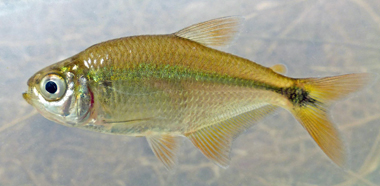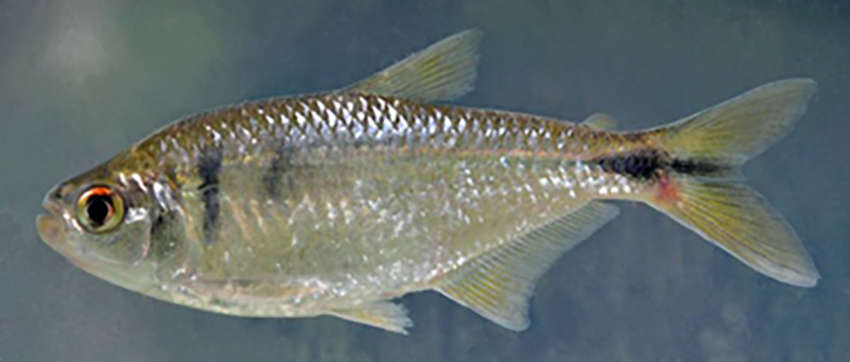new genus:
Andromakhe Terán, Benitez & Mirande, 2020
new combinations from Astyanax for Argentina:
Andromakhe latens (Mirande et al., 2004)
Andromakhe paris (Azpelicueta et al., 2002)
Andromakhe saguazu (Casciotta et al., 2003)
Andromakhe stenohalina (Messner, 1962)
Andromakhe tupi (Azpelicueta et al., 2003)
new combinations from Astyanax for Uruguay:
Andromakhe saguazu (Casciotta et al., 2003)
Andromakhe stenohalina (Messner, 1962)
published in:
Terán, G.E., M.F. Benitez & J.M. Mirande (2020):
Opening the Trojan horse: phylogeny of Astyanax, two new genera and resurrection of Psalidodon (Teleostei: Characidae).
Zoological Journal of the Linnean Society (advanced article: zlaa019, 11.04.2020). 18 p.
abstract (from publication):
The freshwater fish genus Astyanax is one of the most diverse among the Characidae. The genus is defined by a combination of character states that are widely distributed in Characidae. In addition, the genus has the broadest geographical distribution in the family, being found in a great variety of environments of the Neotropical region. Although phylogenetic relationships were treated only partially, many authors agree that the genus is not monophyletic. In this contribution, we study the phylogenetic relationships of Astyanax in the context of the family Characidae, by combining morphological and molecular data. A total of 520 morphological characters, nine molecular markers and 608 taxa are analysed, of which 98 belong to Astyanax. According to our results, Astyanax is not monophyletic. We recovered species attributed to Astyanax in different subfamilies: Gymnocharacinae (including the type species), Stevardiinae and Tetragonopterinae. Among the species recovered in Gymnocharacinae, most (including the type species, the resurrected Psalidodon, and the new genus Andromakhe gen. nov.) were recovered in Gymnocharacini, while the remaining ones were recovered in Probolodini (transferred to Deuterodon or the new genus Makunaima gen. nov.).


